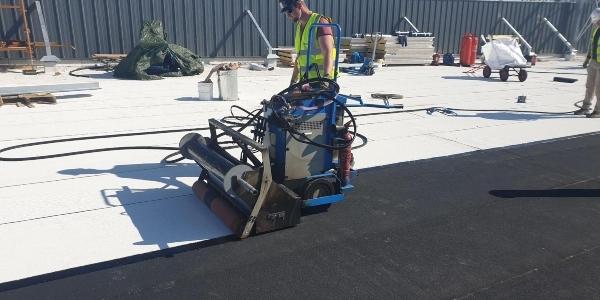An Inexpensive Yet Effective Solution to Your Wind Uplift Problems

By Colin Sheehan, RCS Reporter.
Learn what wind clamps are, when you should use them and how to use them with retrofits.
With wind pressures increasing around the world, wind uplift on standing seam metal roofs has become a more prevalent and frequent problem. Damages from wind uplift can span from minor repairs to tearing the standing seam right out of their mounting platforms. Regardless, the necessary repairs to follow add up and take time to complete.
In this episode of Insights with Experts, Dustin Haddock from S-5!® introduces their wind clamps. He dives into the science behind wind clamps and how they can help contractors avoid costly wind uplift damages.
The video overviews:
-
How wind clamps protect standing seam roofs.
-
Why standing seam roofs fail in high wind events.
-
Other ways to secure your roof from wind.
-
The benefits of using wind clamps.
“A wind clamp is what S-5! trademarked and patented many years ago,” said Dustin. “It is a device that you can put on top of a standing seam that will help reinforce that roof under heavy wind loads.”
Under high wind events, the clamp works to prevent a number of roof failures. The most common for a standing seam is a panel bellow, where the seam will unfold under high winds.
“Placing a clamp directly on that seam is going to prevent that motor failure,” said Dustin. “Another thing that happens is that standing seam might try to unfold up off the clip, the clip which is holding it down to the structure. When [the S-5! wind clap] is placed at a clip location, now you’re keeping the panel from unwinding, but you’re also holding it onto the clip.”
This reinforces the clip and prevents the seam from being unwound, allowing the roof to have more strength and integrity under high wind loads.
To solve wind uplift problems without the S-5! wind clamp, many contractors will drill into the panels, possibly voiding a warranty or creating potential leak problems. To address wind uplift while constructing a new roof, contractors would have to add more red iron, or purlins, and make the seam spacing smaller. This would require more screws, more clips and frequent maintenance – all of which will raise costs and need to be regularly sealed to avoid possible leaks.
“An external clamp like [the S-5! wind clamp] in many cases can double the uplift performance of a roof at a fraction of the cost and you’re allowing retrofit construction to be brought up to code,” said Dustin. “This is a useful means to make that roof a stronger roof and at a minimal cost.”
Watch the entire video to learn more about S-5! wind clamps and how they can help you save money and avoid costly wind damage.
Learn more about S-5! in their RoofersCoffeeShop® Directory or visit www.S-5.com.























Comments
Leave a Reply
Have an account? Login to leave a comment!
Sign In